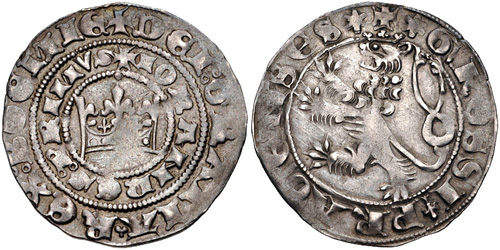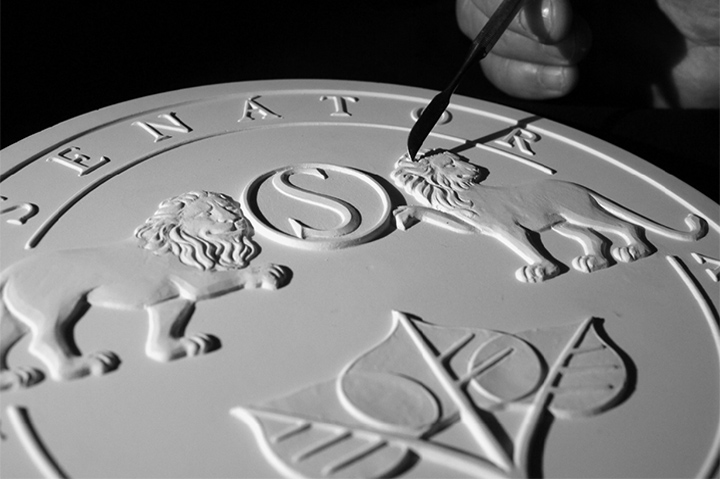Free Info On Coating Czechoslovakia Medals
Wiki Article
What Is A Mold Made Of Plaster? Used To Create An Initial Physical Representation Of A Gold Coin Or Medal?
Gold coins or medal design can be used to serve as a design reference for the artist or designer. This design could be drawn by hand or a digital representation that is created with graphic design software.Choosing the appropriate medium- Plaster is the most common material used for maquettes due to its malleability and ease of sculpting. Also, wax or clay can be used.
Plaster Preparation - The plaster is mixed with water to achieve a consistency that can be worked. To ensure a clean mold, the mixture must be smooth and free of lumps.
Create the base- The maquette is then sculpted onto a platform or base. This base could be a board of wood or an even surface that gives stability.
The Maquette is sculpted using the gold pattern as a template. This is the process of creating a three-dimensional or relief representation of the coin.
Detailing and Refinement - The artist adds details that refine the contours of the image and makes sure that the proportions are accurate and design elements. This process requires precision and attention to detail.
Allowing for drying and setting - After the sculpting process has been completed, the plaster should be given time to set and dry. This enables the maquette to harden and retain its shape.
Smoothing and finishing Finishing and Smoothing - The maquette's surfaces are further polished and refined after drying to remove imperfections rough spots, bumps, and imperfections.
Sealing and Preserving- To protect and protect the maquette, and to prepare it for other processes like scanning or molding, apply a protective or sealant layer on its surface.
The final plaster maquette functions as a tangible three-dimensional representation for the gold coin's design or medal. The plaster maquette can be used to create molds for mass production, as well as to serve as a source material to guide other steps of the manufacturing process. Follow the top rated Prague Mint gold medals plaster molds site advice. including gold bars price, 1 oz gold buffalo coin, oz gold bars, 24 karat gold coin, krugerrand gold coin, order gold coins, price for one ounce of gold, apmex gold coins, gold and silver buyers near me, gold coins coin and more.

How Does An Janvier Machine Transfer A Gold Coin Or Medal Design To The Hub From The Master?
The Janvier machine, sometimes referred to as a pantograph, or reducing machine is a special device that is used during the process of minting to transfer a coin or medal design from a master hub into the hub that is working. This article will provide an overview of how this Master Hub Creation works.
The master hub, sometimes referred to as the original die or mould, is the original mold or die that contains the exact layout and design of the coin. It is made using high-quality CNC cutting.
Janvier Machine - Setup
The Janvier machine comes with stylus, which copy the design of the master hub onto the working one.
The Janvier machine comes with a master hub that serves as a template for the transfer of design.
Tracing Design-
The stylus on the Janvier machine is able to follow the contours and specifics of the design on the hub master. The stylus records the profile of the design as it moves across the hub's surface.
Reduce the Design
The Janvier machine copies simultaneously the traced-out design onto the hub for work. It is typically made of softer materials as opposed to the master wheel for example, steel or nickel.
The cutting tool reproduces or cuts down the design of the hub that is working to the size or scale compared to that of the master hub. This is crucial for the minting procedure, since it allows the striking of coins or medals at the desired size.
Precision and Accuracy
The Janvier machine operates precisely to ensure an precise transfer of the design from the master hub to the work hub. It is able to reproduce even the most minute details and curves.
Quality Control
The final working hub goes through quality tests to make sure it conforms to the specifications for striking and is accurate.
More Processing
The working hub that is created by the Janvier machine can be used to aid in the coin or medal striking process. It is used to create multiple blanks of the coin or medal with the designs transferred.
Janvier machines are vital for the production of coins and medals. They allow the precise reproduction of intricate coin or badge designs. These working centers are then used to produce large quantities of medals and coins by using the striking method. See the top rated janvier processing Prague Mint gold medals website recommendations. including gold quarter dollar, gold panda coin, 20 dollar gold coin, bullion gold bars for sale, double eagle coin, canadian gold maple leaf, gold bullion, gold silver dealers, 1 10 oz gold coin, gold bullion cost and more.

Why Are Gold Coins And Medals Polished By Hand?
Hand polishing of dies is necessary for the production gold coins and medals. This is because it enables better reproduction of the fine details. Smooth surfaces allow for an improved reproduction of the exquisite details and intricate designs on the struck medals or coins.
A polished die creates coins and medals with sharper edges, better relief and clearer particulars. The finished product will exhibit more aesthetic appeal and appeal.
Reduced Tear and Wear Polishing is a great way to reduce friction and wear when striking. The smoothness of a die minimizes the chance of irregularities or defects on the struck medals or coins resulting from rough surfaces.
Consistency in the Striking. Hand polished dies provide an identical striking surface, which guarantees uniformity throughout the minting procedure. Consistency in design is essential to maintaining accuracy and depth or overall quality on a variety of coins and medals.
Longevity and durability of Dies- Well polished dies are less prone to damage or wear when striking. These dies are durable and longer lasting, allowing them to strike more coins without sacrificing quality.
Accuracy and precision- Hand-polishing gives the engraver the capability to refine and fine tune particular areas in the die. This ensures that the specifics of the medal or coin are replicated precisely. The level of precision adds to the accuracy of the finished product.
Quality Control- The polishing process is a component of quality control. Inspecting the die during hand polishing permits the identification and rectification of any defects or inconsistencies before the striking process.
Surface Finish - Polishing provides a unique finish or texture to coins and medals, increasing their visual appeal.
Overall, hand polishing gold dies and medals to perfection is crucial to create high-end, highly detailed, and aesthetically pleasing products. It significantly improves the appearance of the final product as well as quality, and consistency. See the best hand polishing Prague Mint gold medals more advice. including gold bullion coins, $50 gold coin, best place to buy gold bars, american gold eagle, angel coin, 1975 gold penny, gold coins, krugerrand gold coin, saint gaudens gold coin, 1oz gold and more.

What Makes Gold Coins That Are Limited Editions Unique And Numbered?
This helps guarantee authenticity, exclusivity and to boost the value of limited edition or collectible gold coins. Find out why and how counting takes place.
Sequential Numbering - Each coin that is part of an edition of limited numbers or collectible is given an unique serial number. This number is usually printed or engraved on the edge or surface of the coin. This number indicates which coin belongs to the series.
Certificate of Authenticity- The coin could come with a certificate of authenticity which matches the coin's specific number. This certifies that the coin is authentic. It also provides information about the coin's series, the content of metal and its minting.
There are a variety of reasons to count coins by number
Authenticity Assurance – The numbering of every coin within the series is an obvious and reliable method to verify its authenticity. Each number is an unique identifier, and is a guarantee that a coin is authentic.
Exclusive and RareExclusive edition coins with distinct numbers are thought of as being more rare and exclusive. Collectors typically seek out numbered coins due to their lack of availability, which contributes to their desirability and value.
The Collectible Appeal - Coins that are number coded create a collector's appeal that allows collectors to follow and highlight particular numbers in a collection. The numbers with the most significant or lower values within the sequence may be deemed more important.
Collector Engagement - Individual numbers increases collector interest and engagement when it comes to completing sets, or acquiring specific figures. Some collectors seek out specific numbers because of their personal tastes or landmarks.
Value and Resell Potential- Coins which have unique numbers are likely to have an increased value, especially in the case where the serial number is smaller or is part of a desired series. These coins are prized by collectors because of their rarity and uniqueness.
Trackability and Documentation - Numbering facilitates tracking and documentation of each coin's history, helping in proving provenance and verifying the market for collectors.
Issuers and mints can verify authenticity by numismatizing the limited edition gold coins. They also provide exclusivity. This can increase their appeal to collectors who are looking for unique, valuable, or significant pieces from a particular series. These numbered pieces often have a special meaning and significance in the world of numismatics. Read the most popular Prague Mint gold medal numbering blog tips including spanish gold coins, gold coin prices, chinese coins, price of gold 1 oz today, 24 karat gold coin, silver bars for sale near me, gold sovereign coins, $5 gold coin, gold medals, buy gold bars from bank and more.
